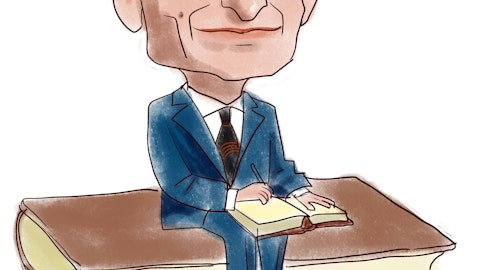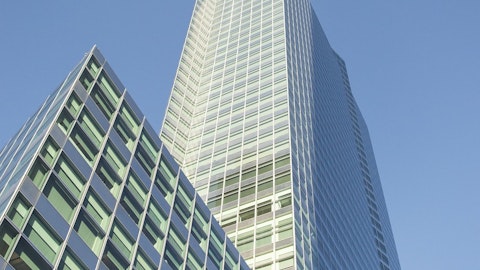That’s not to say that there aren’t plenty of reasons to be bullish on Goldman Sachs. For example, in two very important metrics, the strength of its balance sheet and growth in tangible book value per share, the bank is doing well.
Specifically, tangible book value per share, which is the objective intrinsic (i.e. “liquidation”) value of a bank’s net assets, increased from $162.11 to $172.45, or 6.4%. Now, granted almost all of this was due to a 6.2% decline in share count courtesy of the bank’s massive buyback program.
However, when it comes to cyclical industries such as banking, financial engineering (i.e. returning profits to shareholders in the form of buybacks) is a legitimate means of boosting long-term intrinsic value. That’s especially true if done when shares are undervalued, as they currently seem to be at first glance.
Goldman has also made great progress in fortifying its balance sheet to ensure that another economic downturn doesn’t bring it to its knees as occurred during the financial crisis. This can be seen in its Common Equity Tier 1 capital ratio or CET1, which measures net asset values + retained earnings / risk weighted assets and currently stands at a record high of 14.0%, compared to the minimum 9.5% set by regulators.
In fact, this fortress-like balance sheet means that Goldman is very well prepared for the next potential financial crisis, as seen by the results of this year’s stress test. The stress test is an annual check of the balance sheet strength of the largest and most important banks in the world and simulates a “worst case scenario” consisting of:
– US GDP falls 7.5% (Great Recession only saw 5.1% decline)
– Unemployment rises from 4.7% to 10.7%
– Housing prices collapse 30%
– Stock market falls 51%
Federal regulations require that a bank’s CET1 remain above 4.5%, including capital spent on buybacks and dividends. During the 2016 stress test, Goldman’s CET1 fell from 13.6% to a minimum of 8.4%, far above the minimum safe limits. And it beat JPMorgan’s and Bank of America’s minimum CET1s of 8.3%, and 8.1%, respectively, though it fell short of Morgan Stanley’s and Citigroup’s respective 9.1%, and 9.2%.
In other words, in the event of a financial catastrophe worse than the great recession, Goldman shareholders likely won’t need to be worried that their shares might become worthless. However, there are still some risks to remain aware of.
Key Risks
The biggest risk for Goldman shareholders is that the investment banking industry is highly cyclical. While the bank’s largest business segment, Institutional Client Services, might not see a giant decline in revenue because high volatility during a market crash requires large market making and order executions, IPO, merger, and equity and loan origination would all suffer, as would the asset management division that would make less management fees due to portfolio losses.
And in the event of a severe global recession or another financial crisis, while the bank will likely survive, investors need to consider the fact that all major banks, including hybrids and retail banks such as Wells Fargo & Co (NYSE:WFC) or US Bank (USB) might see exceptionally high volatility.
In other words, because of how some banks fell by as much as much as 99.9% during the financial crisis of 2008-2009 (Citigroup fell from almost $600 to $1), banking stocks, including Goldman, might end up getting sold off to ridiculously low levels in a classic market overreaction (investors spook easily).
While that could make for a fantastic long-term buying opportunity, if you need to sell during this time to fund expenses, you could see your capital permanently decimated.
Finally, we can’t forget that Goldman Sachs has a history of unethical behavior that results in steep legal fines. For example, thanks to its role in selling toxic mortgage backed securities to clients, and then betting that they would fail, the bank was fined $550 million.
Or put another way, current investors are betting that the bank’s days of “being evil” are behind it and that it no longer attempts to profit at the expense of its customers.





